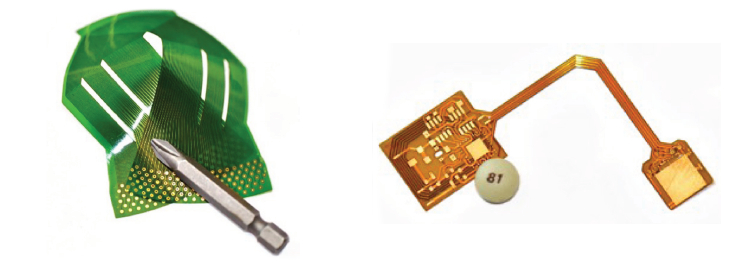


A multilayer flex circuit has three or more conductive layers with insulating dielectric in between. It features blind or buried vias and top or bottom access to conductors. CarlisleIT specializes in microvias – vias created with precision laser drilling techniques and those that require dimensional and positional accuracy which most companies cannot attain. By using the thinnest dielectrics available for making interconnects, we make flex circuit interconnects as thin as 1 MIL (25 µm) – including the protective cover layer. A thin flex circuit allows for thin, tiny traces with tight spacing, and possibly fewer number of layers. At the same time, these flex circuits are lighter and highly-flexible. Flex circuits can reduce product assembly time because they seamlessly integrate form, fit, and function into a single circuit. A reduction in assembly time also reduces manufacturing errors and costs.
CarlisleIT offers fast prototyping and manufacturing of smaller, lighter, and more-reliable flex circuits through MicroConnex, a Carlisle Company. To learn more about our services, visit MicroConnex.com/services/flex-circuits/.
To inquire about Low-Loss Flex Circuits available from CarlisleIT, please fill out the form below, and one of our Sales Engineers will contact you.
"*" indicates required fields






